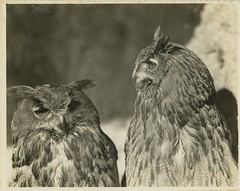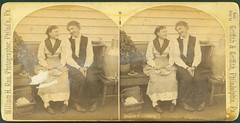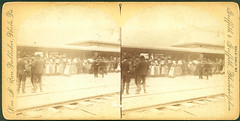
Balkan Owls, ca 1913, by Merl LaVoy. (Reeve 39645)
And our Flickr stats for the moment stand at 1,618 items / 876,972 views, up only ~7000 views in the two weeks from Sept 15th when I posted 1,605 items / 870,097 views.
An unofficial blog about the National Museum of Health and Medicine (nee the Army Medical Museum) in Silver Spring, MD. Visit for news about the museum, new projects, musing on the history of medicine and neat pictures.
SKIN LESIONS OF HOG CHOLERA. AMM 489
SENDING CARRIER PIGEON FROM RELIEF (DURING THE SPANISH-AMERICAN WAR). AMM 64
Just wanted to pass this along to all my "dog friends." I know things are tight all around but if your are looking to support our troops (both 2-legged and 4-legged) this may a good choice. More info at their site http://feedthedawgs.com/FeedtheDawgs.aspx If you get a chance, check it out.
ARF!
Mike
Vaughn,
Will you forward my email to the other VDHA Unit Directors and have them pass it on to the members of their units. The Feed the Dawgs guys are doing a great thing for today's dogmen and women. They can use our support if any of the guys can afford to make a donation.
Thanks,
Jim Stewart 377 SPS Unit Director VDHA
377 SPS K9 9/67-9/68 Dobe 7X49
Guys,
I just received an email from our brother 377 SPS dogman, Jon Hemp. He is involved with Feed the Dawgs, to which I have just made a donation, and they could use some additional donations to keep going. Jon explained their upcoming project like this.
Just about every time it looks like we're running out of fuel and headin' for the ditch, someone steps up. No money from donations has ever been spent on anything BUT the new troops. A big piece of your donation will go towards feeding 82 3rd Marine Division Dawgs at 29 Palms on 7 November. Best guess is that the event will cost us approximately $700 to $800 once we have a final headcount including family members, vet detachment, PAO personnel and the Base Commander - estimated now at 130 people.
The Feed the Dawgs web site is at: http://feedthedawgs.com/FeedtheDawgs.aspx
If you can help this group of guys feed some of today's MWD handlers send your donation in the name Jon Hemp to:
Jon Hemp
1437 Revelation Way
Redlands, CA 92374


The History of Medicine Division of the National Library of Medicine and the Office of History at the National Institutes of Health are pleased to announce a symposium:
Finished Proofs? A symposium to celebrate the 150th anniversary of the publication of On the Origin of Species (1859)
Location: Lister Hill Auditorium, National Library of Medicine (NIH)
8600 Rockville Pike, Bldg. 38A
Bethesda, MD
Date: 1 October 2009
Time: 9:00 AM – 6:15 PM
SPEAKERS:
Janet Browne, Harvard University
Eric Green, National Human Genome Research Institute
Michael Ruse, Florida State University
Barry Werth, Independent Author
Edward O. Wilson, Harvard University
COMMENTATORS:
Nathaniel Comfort, Johns Hopkins University
Alan E. Guttmacher, National Human Genome Research Institute
Joe Palca, National Public Radio
Maxine Singer, Carnegie Institution for Science
All are welcome.
Michael J. North, northm@mail.nih.gov
Head of Rare Books & Early Manuscripts
History of Medicine Division
National Library of Medicine
8600 Rockville Pike
Bethesda, MD 20894
(301) 496-9204 * fax (301) 402-0872
http://www.nlm.nih.gov/hmd
National Institutes of Health
Department of Health and Human Services
“Civil War Reenactment at the Medical Museum”
When: Saturday, October 3, 2009, 10:00 a.m. - 5:00 p.m.
Where: The National Museum of Health and Medicine
Building 54
What: The grounds of the nation’s medical museum will be transformed into a living history experience of Regular Army life during the Civil War. Displays on Civil War medicine and the role of the Sanitary Commission will be available along with exhibits on camp life, infantry drilling exercises and 19th century weapons displays. Children will enjoy hands-on activities such as building a replica of the hospital ship USS Red Rover, making a medical unit flag and creating a pin-hole camera.
Performances by the Federal City Brass Band at 10:00, 11:00, 1:30 & 2:30.
The reenactment is made possible by members of the 3rd U.S. Regular Infantry Reenactors. AFIP’s very own YN2(AW) Kelly Cochran is a member of the 3rd U.S. and will participate in the program!
While visiting the reenactment, visitors are encouraged to tour the Museum's permanent exhibition "To Bind Up the Nation's Wounds: Medicine During the Civil War." NMHM was founded in 1862 to study battlefield medicine in order to improve the care of the soldier.
The event will take place on the west grounds of the museum and in the museum galleries. This family event is open to the Walter Reed community and the general public.
Cost: FREE
Free parking available. Photo ID required.
For more information: nmhminfo@afip.osd.mil or (202) 782-2673
This rolled in recently:
Hello, Subscribers to museum & society ,
The latest issue of museum & society is now available online at: www.le.ac.uk/ms/museumsociety.html.
contents
‘Journey without maps’: unsettling curatorship in cross-cultural contexts
Lisa Chandler
Translations: experiments in dialogic representation of cultural diversity in three museum sound installations
Mary Hutchison and Lea Collins
Objects, subjects, bits and bytes: learning from the digital collections of the National Museums
Siân Bayne, Jen Ross and Zoe Williamson
Review Article
Simon J. Knell, Suzanne MacLeod and Sheila Watson (eds),
Museum Revolutions: How Museums Change and are Changed
Kylie Message
Best wishes,
Jim Roberts
Production Editor
museum & society
******************************
Jim Roberts Hon FMA
Webmaster
University of Leicester
School of Museum Studies
http://www.le.ac.uk/museumstudies
The third article is of interest to me. One point that I think wasn’t emphasized enough is that non-art museums can only put about 1%, in a best case scenario, of their collections on display. Therefore the online museum gives people an opportunity to access objects that no one else, including the curators, are using or paying attention to. In our scanning project, we have over 700,000 images created. Some of them are books, but the great majority are photographs that nobody had looked at since they were taken and the only record of them had been an index card in a nondescript building in Washington, DC. Someday soon, these will be available to anyone in the world who has Internet access. To me, that’s a big change in the status quo.
Teddy Bear Clinic to take place Saturday, September 12
On Saturday, September 12 from 1-3 p.m., the National Museum of Health and Medicine will its first Teddy Bear Clinic. It should be a lot of fun!
We’re asking kids in PreK-3 to 2nd grade to bring their favorite stuffed animals to be checked out by the experts. First they’ll visit a craft station where they’ll make doctor’s headbands, nurse’s hats, and doctor’s bags. Then, they’ll visit several stations where their stuffed animal’s vitals and teeth will be checked, shots will be administered, and healthy eating and exercising habits will be discussed. (Hopefully the kids will learn a few things, too!) At the end of the program, their friend will be issued a clean bill of health certificate.
This will be the last in a series of programs that were designed to complement the exhibition entitled “David Macaulay Presents: The Way We Work.” The exhibit closes on September 20, so stop by soon if you haven’t had a chance to see it.
The Public Programs staff would like to thank Aileen Mavity, one of the museum’s summer interns, for her help in designing this program!


Museum to Participate in Cultural Tourism DC’s Fall WalkingTown DC
Below is the listing from Cultural Tourism’s website (www.WalkingTownDC.org) for the walking tour that the Museum will take part in on September 19. If you’d like to join in, make your reservation soon because we can only accommodate 30 participants. Last spring, we participated in WalkingTown for the first time with rave reviews. This year, John Pierce, Walter Reed Society historian, will lead the walking tour of the Walter Reed campus—he plans to take the group into the lobby of Building 1 to share the history of that beautiful structure. He will end his portion of the tour at the Museum, where Andi Sacks, Museum Docent Extraordinaire, will provide an introduction to the exhibtions and walk around with the group to describe highlights.
Walter Reed Army Medical Center and the National Museum of Health and Medicine
Saturday, September 19
9 - 11 am
Meet at Walter Reed Army Medical Center, Building 1 (enter Georgia Avenue/Elder Street gate)
Nearest Metrorail/Metrobus: Takoma Park Metro station (Red line), 70 Metrobus
End at National Museum of Health and Medicine, Building 54
Reservations required: Online
Explore the 100-year history of Walter Reed Army Medical Center and learn how one man’s dream led to one of today’s leading medical facilities. Landmarks include the original US Army General hospital, where Eisenhower and General of the Armies John J. Pershing spent their final days, the new hospital complex, the formal Rose Garden, the Memorial Chapel, the Walter Reed Memorial, and the spot President Lincoln was nearly shot during the Battle of Fort Stevens. Then tour the National Museum of Health and Medicine to learn about the history of military medicine, including a special exhibit about the medical care given to President Lincoln during his last hours. Tour is just over one mile long. Led by John Pierce, a retired Army physician and historian of the Walter Reed Society and Andi Sacks, a National Museum of Health and Medicine Docent.
Note: Photo ID required.
“Teddy Bear Clinic”
When: Saturday, September 12, 2009 (1:00-3:00 p.m.)
Where: National Museum of Health and Medicine
What: Bring your favorite stuffed friend and explore the Teddy Bear Clinic with activities and crafts designed to highlight the body, nutrition, physical fitness, and healthy habits.
Recommended for grades PreK-2.
Cost: FREE!
Information: nmhminfo@afip.osd.mil or (202) 782-2673
One of our main Civil War attractions is General Sickle’s legbones, which he sent into the Museum. I found two pictures of him on the web today, at New Jersey’s Archives website at http://www.state.nj.us/state/darm/links/guides/sdea4010images7.html . They’re at the bottom of this page.